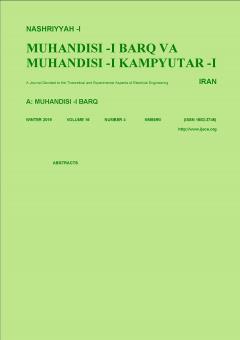-
-
List of Articles
-
Open Access Article
1 - A Multigate Scheme to Improve CORPL under Traffic Load in Cognitive Radio Based Smart Grids with Mesh Topology
S. A. Hashemian V. Tabatabvakili -
Open Access Article
2 - Design and Construction of High-Current Line-Commutated Rectifier Based on Parallel Thyristors
M. Shahparasti Mohammad Farzi M. Arefian R. Asad M. Sharei-pour -
Open Access Article
3 - Reliability Modeling of PV Farm Using Markov Model
V. Khaligh H. Monsef -
Open Access Article
4 - Winding Losses Calculation in Multi-Winding Traction Transformer Using a Semi-Numerical Method
D. Azizian G. Gharehpetian -
Open Access Article
5 - A DC-DC Interleaved Converter Based on Buck Topology with High Step-Down Conversion Ratio
M. Ghanbari M. R. Yazdani -
Open Access Article
6 - Algebraic Stability Analysis and Stabilization by Proportional Controllers: Critical Inflection Point in Phase Diagram
kh. Neshat M. S. Tavazoei -
Open Access Article
7 - Design and ُSimulation of a New High CMRR, High Bandwidth and Low Power Current Mode Instrumentation Amplifier Based on FDCCII
S. Ahmadi S. J. Azhari -
Open Access Article
8 - A New Statistical-Physical UTD Based Channel Model for Calculating Channel Capacity in Mobile Urban Areas
Ali Tajvidy
-
The rights to this website are owned by the Raimag Press Management System.
Copyright © 2017-2025







